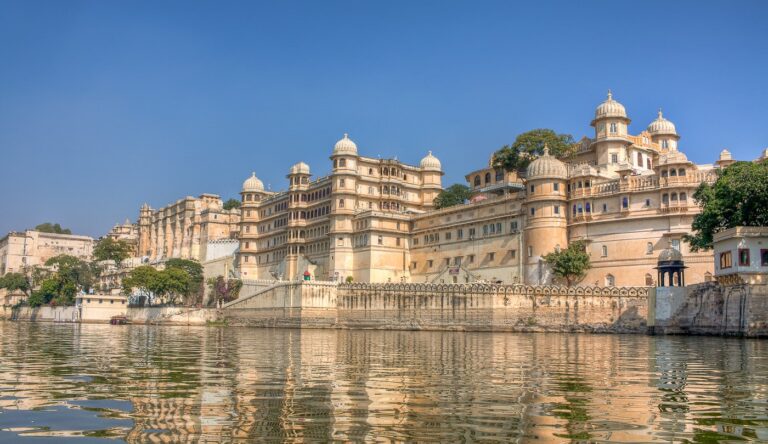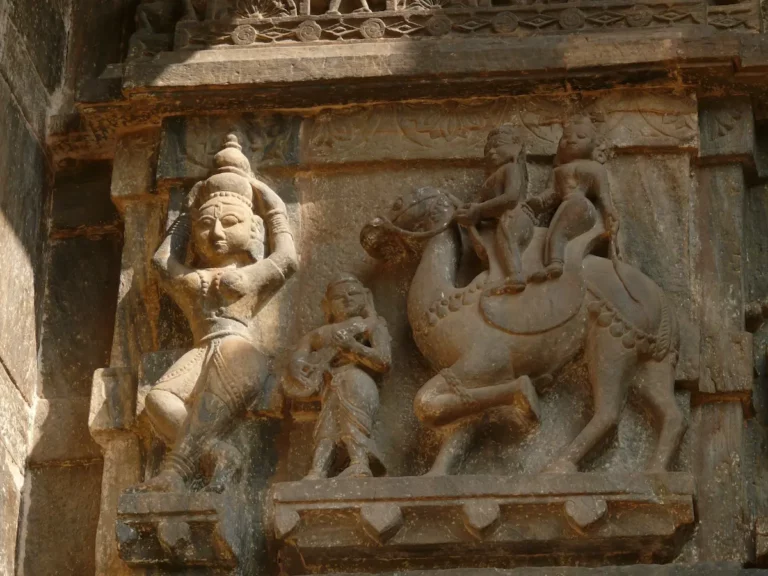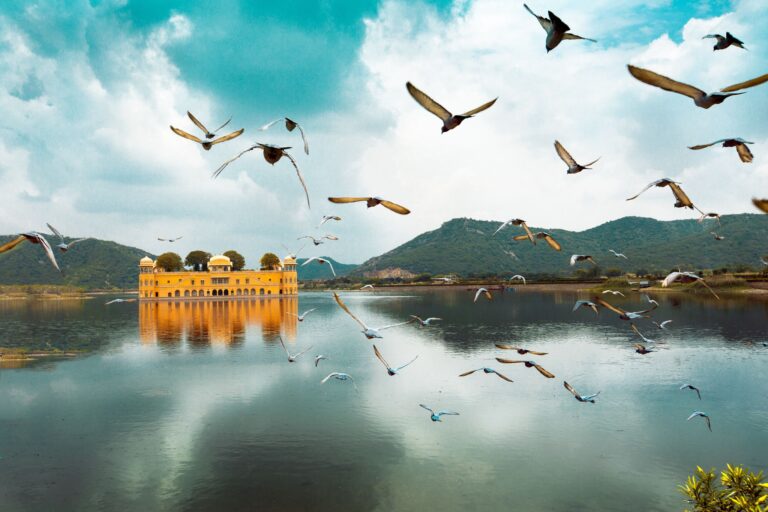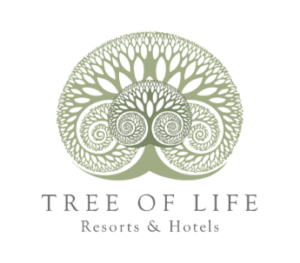Bagore Ki Haveli, one of the most popular tourist attractions in Udaipur, is a haveli situated on the shores of Lake Pichola at Gangori Ghat. Over time, Bagore Ki Haveli, built in the 18th century by Amar Chand Badwa, Prime Minister of the Mewar dynasty, became a museum.
Bagore Ki Haveli’s History
Bagore Ki Haveli was constructed between 1751 and 1778 by Shri Amarchand Badwa, the Mewar kingdom’s Prime Minister under Maharanas Pratap Singh II, Raj Singh II, Ari Singh, and Hamir Singh. It was taken over by the Mewar royal family after Amarchand Badwa’s death and became the home of Nath Singh, a relative of the then Maharana.
During Maharaj Shakti Singh of Bagore’s expansion of the haveli in 1878, he built the triple-arched gateway, and since then it has been known as Bagore Ki Haveli. The haveli was owned by the Mewar state until 1947.
The government of Rajasthan used the Haveli after India’s independence to house government employees. After nearly forty years of neglect, the government decided to turn the haveli over to the West Zone Cultural Centre for restoration.
Bringing back the Bagore ki Haveli in its Former Glory
It was converted into a museum by the West Zone Cultural Center, which maintained it’s royal appearance while preserving the architectural style of the haveli. Many members of the royal family were consulted and the Haveli was restored using local and traditional skills to preserve its old-world charm.
Traditional materials such as lakhori bricks and lime mortar were used in the restoration of Bagore ki Haveli. Repairs and replacements were made to severely damaged but still usable doors, windows, and perforated screens.
Bagore Ki Haveli is now open for business.
Additionally, the hotel has 138 rooms, along with a number of corridors and balconies. Haveli’s interiors are decorated with delicate mirrorwork. In the Haveli, you can also see the private quarters of the royal ladies—their baths and dressings rooms, as well as their bedrooms and living rooms.
They still have beautiful Mewari-style frescoes and a beautiful coloured-glass window in one room, and two peacocks made of coloured glass mosaic that show off the finest craftsmanship.
Jewellery boxes, dice games, dice pans, nutcrackers and hand fans are just some of the items on display at the Rajput clan’s museum. Copper vessels and other items are also on display.
A traditional performance of Rajasthani dance and music takes place in the haveli’s courtyard in the evening. The nighttime illumination of the haveli is stunning. Bagore Ki Haveli is a great place to learn about the royal family’s history and way of life.
Bagore ki Haveli’s Architectural Design
The Bagore ki Haveli is a must-see for art enthusiasts because of its stunning architecture and masterful craftsmanship. Huge courtyards, jharokhas, archways, cupolas, balconies, and a fountain make up Bagore ki Haveli, which reflects the Mewar’s aristocratic culture.
The interiors of the Haveli, which has 138 rooms, are adorned with stunning mirrorwork. Glasswork and murals decorate the walls of the Haveli to a high degree. The finest craftsmanship can be found in various rooms used by the royal family.
It’s worth a trip to the Royal Ladies’ Chambers to see the beautiful coloured glass windows. It is home to two exquisitely crafted peacocks made from coloured glass mosaics.
The Bagore ki Haveli: An Overview
When one enters the Haveli’s gates, they are greeted by a beautiful courtyard with a two-story Lotus fountain. In Bagore ki Haveli, there are three main chowks: Kuan Chowk, Neem Chowk, and Tulsi Chowk..
Known as the “Well Court,” the Bagore ki Haveli’s Kuan Chown was the place where the staff performed their day-to-day household duties and housekeeping chores.
The Haveli’s Neem Chowk, located on the first floor, is encased in beautiful brass doors and served as a venue for royal men to enjoy live music and dance performances. Even today, the venue features a variety of performing arts.
There were two other restricted areas in the palace: the Kanch Mahal (mirrored passageway) and Durrie Khana. The Director’s office, formerly the Haveli’s largest room, is now known as the Diwan-e-khas.
Tulsi Chowk, on the other hand, housed the zenana, the women’s quarters, for the princesses. The ladies of the Haveli would perform Ghoomar in this Chowk during festivals and celebrations.
Turbans and women’s clothing are now on display in the Chowk. An art gallery in Tulsi Chowk recalls the glory days of Haveli.
The women of Bagore ki Haveli also use the Shringar Kaksh, a dressing room. The princesses kept their belongings in a wooden trunk in this room. This room is also home to Itra Daan, a perfume worn by the king’s women.
Haveli women were also musically inclined, and the Haveli’s Sangeet Kaksh served as a place where they could study music and practise instruments like the santoor, chang, dholak, nagad, and sarangi.
Board games like chaupad and ganjifa were popular at Manoranjan Kaksh, where men congregated to play.
The Museum Bagore ki Haveli is divided into five sections: the Puppet museum, the main haveli, the Turban museum, the Weapon Museum, and the Wedding Depiction Section. Each of these areas has been meticulously cared for.
First, there is the Bagore ki Haveli Puppet Museum.
Puppet museum features a variety of puppets that are sure to be a hit with children. Handmade miniature puppets and other decor greet visitors at the museum’s entrance.
The king’s courtroom is depicted in the form of puppets, with the king, queen, and various other ministers seated in their seats on the other side of the room. They also have puppets of animals like horses and elephants as well as many other kinds of toys.
The museum also sells puppets for a reasonable price. If you’re travelling to Rajasthan with children, don’t miss the puppet museum, which is an important part of the local culture.
Second, the Haveli museum
The terrace, reached via a flight of stairs, provides a stunning view of Pichola Lake. The terrace offers views of the Oberoi Udaivilas Palace Hotel, Taj Hotel, and City Palace across the lake.
In the Haveli, one can find lobbies leading to various rooms, such as private quarters for the royal ladies, their bathrooms, dressing rooms, bedrooms, living rooms, and worship rooms. The rooms are decorated in a period style to give guests a sense of what life was like for the royal family in the past.
The bedrooms have an old bed in the corner, as well as all the other things you’d expect to find in a typical old-fashioned bedroom. Rugs and cushions cover the floor in the living room, where dolls or puppets of people sit on the sofas. In addition, an old-fashioned kitchen with earthenware pots can be seen here.
These beautiful paintings depict scenes from the era of the monarchy and adorn the lobby walls. There are paintings depicting women at home doing their chores, as well as kings preparing for battle at Lake Pichola, in this gallery. Another painting depicting the social structure of Bagore ki Haveli’s residents can be found.
The museum displays a variety of Rajput-era artefacts, including royal costumes, jewellery boxes, dice games, hookahs, and rosewater sprinklers.
Visitors are drawn to the museum’s basement, which features an impressive collection of fine art. The museum also houses the historical Indra Viman, also known as the Elephant Chariot, which belonged to the Jhalawari kings.
In addition to the Eiffel Tower, the Chittorgarh Victory Tower, the Taj Mahal, and the Leaning Tower of Pisa, the museum has recently added a thermocol model of Bagore Ki Haveli.
The first-floor lobby’s beautiful swing, suspended from the roof, demonstrates how the ancient ladies used to enjoy swinging here.
Bagore ki Haveli’s Turban Section
The Turban section of the Haveli is located on the ground floor and features turbans from Punjab, Haryana, Rajasthan, and Gujarat. The wearing of turbans by people from various states, which is an important part of their culture, is revealed.
Tie-dye fabric is commonly used to make Rajasthani turbans, while plain cloth turbans can be found in Punjab. There are many similarities between Rajasthani turbans and Gujrati turbans, but there are also significant differences in terms of colour and size.
Bagore ki Haveli’s Weapons Section
The weapons section of the museum, which is located right next to the entrance, is comparatively smaller. It displays a variety of weapons used in battle by kings and their armies.
Bagore ki Haveli’s Wedding Section (page 5)
Bagore ki Haveli’s wedding section is a smaller exhibit that uses dolls or puppets to depict the various stages of an Indian wedding.
This section provides information on the various customs and rituals involved in a traditional Indian wedding, from muhurat fixation to the wedding and the post-wedding rituals.
Bagore ki Haveli’s Dharohar Dance Show
The Dharohar Dance Show, which begins at 7 p.m., is the most popular feature of Bagore ki Haveli. The Neem Chowk courtyard is the setting for this one-hour performance. The Neem chowk’s beautifully lit balconies serve as a backdrop for the Rajasthani folk dance and music of the Haveli.
The stage is surrounded by seating arrangements on the ground. Large mattresses have been set up on the floor so that spectators can get a good view of the dancers on all three sides of the terrace.
At the beginning of the Dharohar Dance Show, an Indian woman dressed in traditional Rajasthani attire gives a brief introduction. A conch shell is blown, a drum is beaten, and a religious song is sung before each performance.
Musicians playing harmonium and tabla accompany well-choreographed dance routines. The dancers wear traditional Rajasthani ghagra cholis embellished with glass and embroidery work and traditional Rajasthani folk costumes.
The first performance is a Chari Dance, in which the dancers balance lit brass pots on their heads.
Terha Taal Dance, the next dance performance, requires precise coordination as the dancers play 13 manjiras (bells) tied to their hands and legs in time with the music. With their mouth full of knives and brass pots, they play the manjiras quite well at one point in the performance, which is quite a feat.
Performers in the Gorbandh Dancewear camel ornaments and dance with abandon in the next performance. This performance is sure to bring back memories of one’s childhood, with women twirling in high-speed circles while holding hands.
The next show is a Rajasthani Puppet show for the little ones in the audience, a break from the dance performances. The puppet skits add a dose of levity to the show.
Dancers perform the Ghumar Dance, a high-class dance performance in which they move in rhythmic circles to the accompanying music.
The show’s final act is the Bhavani Dance, in which the performer balances earthen pots on her head while dancing. With up to 13 pots on her head, this performance is the most difficult, as the performer must balance on broken glass while dancing and performing other acts.
It’s a colourful and vibrant show that demonstrates Rajasthani folklore in an interesting way at the Bagore-ki-Haveli. This beautiful Haveli is a must-see for anyone who appreciates fine craftsmanship and fine artistry.
The Bagore ki Haveli Entry Fee
Bagore ki Haveli Museum charges Rs. 60 for Indian adults and Rs. 30 for Indian children ages 5 to 12 years old for the admission fee. Foreigners are charged Rs. 100 for adults and Rs. 50 for children to enter the park. The cost of a camera is Rs.50.
Ticket prices for the show’s Dharohar Dance are Rs. 90 for Indian adults and INR. 45 for Indian children, respectively. There is an INR. 150 adult tickets and an INR. 75 child ticket fee for non-residents of India. The cost of a camera is INR. 150.
Bagore ki Haveli Museum hours are from 9:30 a.m. to 5:30 p.m. every day of the week.
Every day of the week, Dharohar Dance Show runs from 7:00 p.m. to 8:00 p.m. 6:15 pm is the cut-off time for purchasing tickets to the Dance show.
During holidays and special events, the schedule maybe a little more flexible than usual.
In the case of Bagore ki Haveli, the availability of guides
At the Bagore ki Haveli grounds, there are guides who can give visitors a comprehensive overview of the complex for a small fee.
The best time to go to Bagore ki Haveli is from November to February.
The best time to visit Bagore ki Haveli is during the winter months of September through March when the temperature rarely reaches above 28.3°C.
Summers are the worst time to visit the Haveli because of the city’s extreme heat.
To get to Bagore ki Haveli, here’s how:
Located in the Old City of Udaipur, Bagore ki Haveli is within a 1-mile radius of the city centre. Local buses, auto-rickshaws, and taxis provide easy access to and from the Haveli. Udaipur car rental companies can also provide you with a private cab to get you there.
The Haveli is just a short distance from both the airport and the train station. The closest airport is Maharana Pratap Airport, located 23.3 kilometres away, and the nearest train station is Udaipur Railway Station, located 2.4 kilometres from the Haveli.
The city of Udaipur is well-served by public and private buses that travel between the city and other major cities.
Tourists can enjoy a wide range of experiences in Udaipur thanks to its rich cultural and historical heritage and magnificent palaces. Bagore ki Haveli is a must-see for anyone visiting the City of Palaces because it embodies the best of Rajasthani culture and tradition.







